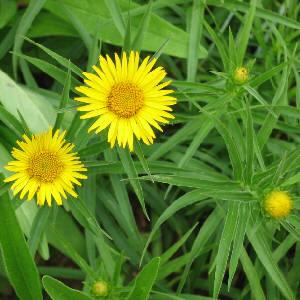There are a multitude of healing plants which have effectively been used to promote health for hundreds, and sometimes thousands of years. Mainstream heath care practitioners are only beginning to appreciate and recommend these amazing natural remedies.
Physicians and other health care experts did use wild plants extensively until around the early 1900s. They were the main medicines listed in the American Medical Pharmacopeia. Around the turn of the 20th century, the American Medical Association became quite powerful and essentially created a monopoly which resulted in essentially eliminating naturopathic medicine and homeopathy from mainstream America.
“Wonder” Drugs and their Impact on Society and Medicine
With the advent of penicillin and other “miracle drugs,” the medical profession and general public began to believe that pharmaceutical drugs were better and more effective than traditional practices.
While modern pharmaceuticals can be essential life-saving tools, ordinary weeds can work quite well. Often weeds are safer, cheap, and have fewer side effects than modern drugs. Unfortunately, as “wonder” drugs and high tech medical care became more available, people began to take less responsibility for their own health. They left their health care to the “experts.”
Medicine and Money
Ordinary common plants cannot be patented in their original form. Pharmaceutical companies invest billions of dollars to patent a medicine. Since weeds cannot be patented, there is no financial incentive to invest in research.
In addition, medical schools, pharmaceutical companies, insurance companies and health care systems all fund each other. As a result, physicians receive little or no education about the wonders of healing plants.
The Future of Healing
Fortunately, the tide is changing. People are once again taking charge of their own health. We have opportunities to return to our very roots of healing. This does not mean that modern pharmaceuticals and technology is not useful. What this change means is that people are becoming empowered. Over time, our health care system may utilize food, simple home remedies, wild plants, and ground-breaking new pharmaceuticals effectively as part of a broad continuum of health care. In fact, this is the only way that humans and the planet’s resources will survive.
Surprising Weeds that Promote Health

Kudzu. Image source: mrkudzublog
Many ordinary weeds that are viewed as nuisances by homeowners — including your doctor — are some of our best plant allies. If you opt to use weeds, be sure that you identify them correctly, gather only what you need, and save plenty of plants to ensure the health and availability of the plants for future generations. Collect plants that have not been sprayed or treated with chemicals.
Here are five healing weeds to consider:
1. Kudzu – all-around medicine. The weed that ate the South is good medicine.Kudzu has been utilized by traditional Chinese medical practitioners for thousands of years. The roots and flowers are used medicinally. Kudzu is nutritious. The tea is excellent for treating vomiting, diarrhea and fever. Kudzu has compounds which are similar to soy. It alleviates menstrual discomfort and hot flashes. Kudzu relieves a wide array of maladies, including migraine headaches, psoriasis and irregular heart rates.
The plant has been used to treat alcoholism for more than six centuries. Recent studies indicate that kudzu helps the body to utilize insulin more effectively, making it beneficial for diabetics.
2. Mullein — the “respiratory medicine chest.” Tall mullein with its yellow flowers makes an outstanding remedy for ear aches. Combine it with garlic and olive oil to create an herbal oil which cures ear infections. Never use mullein/garlic oil or any other ear drop if you suspect that the affected individual may have a perforated ear drum. Mullein makes an outstanding remedy for coughs. Some people like to smoke it or use the herb in a tea to help with smoking cessation.

Yellow dock. Image source: Flickr
3. Yellow dock – help for the liver. Yellow dock root promotes the flow of bile, thereby aiding the digestion of fats. It is a bitter herb which stimulates the appetite and normalizes digestion. Yellow dock tones the intestinal tract; normalizing bowel function.
4. Motherwort — lowers stress and enhances heart health. Motherwort is a great tonic for the heart. It relaxes blood vessels, which results in lowered blood pressure and improved circulation to the heart itself. Angina can be relieved with the use of motherwort. Motherwort is a general relaxant, as well. It is useful for the treatment of anxiety.
5. Elecampane root — for cough. Elecampane root is a fabulous remedy for wet mucus coughs. It possesses outstanding expectorant properties, making it useful for chronic coughs, bronchitis, colds and flu. Elecampane is nutrient-rich as well.

Elecampane Root. Image source: Drfloras
Incorporating Weeds into Your Health Care Plan
Learn as much as you can about plants that you intend to utilize. If you have a health concern, consult with your primary health care provider for proper diagnosis. Mainstream health care providers are becoming more informed about natural remedies, but most are still not familiar with using wild weeds. In addition to a mainstream health care provider, you may want to consult with a naturopath or an herbalist, especially if you are attempting to treat a chronic or serious health concern.
